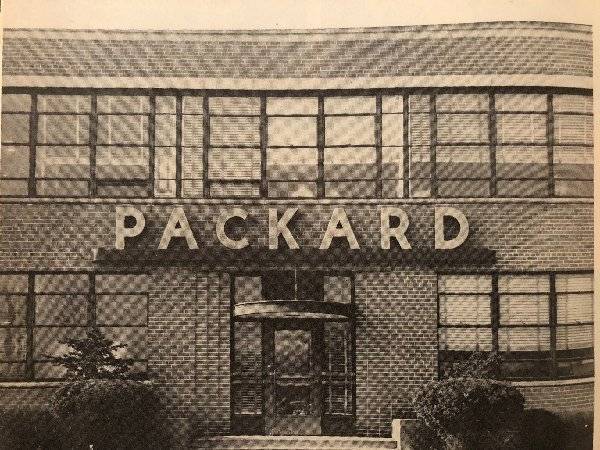Home away from home 


Joined:
2008/8/16 13:01
Last Login
:
Yesterday 10:24
From The Motor City, Baby!
Group:
Registered Users
|
Mike, if anyone would know when production of the 56th Series cars began, I'm sure it would be either Leeedy or Mr. Pushbutton.
ptv, whether Packard would have stayed afloat much longer on its own versus the fateful Studebaker-Packard combination is bound to be one of those eternal "what-if" questions that will be debated for as long as there are people interested in Packards. Not to hijack this thread, but as Mr. Pushbutton has pointed out many times before, the killer of the Independents was the cost and amortization of steel body tooling.
Studebaker's last body was introduced on its 1953 cars, and the same basic structure remained underneath the Lark until the bitter last stand in Hamilton, Ontario.
Kaiser-Frazer featured two different body designs plus a Henry J compact during its short lifespan, but it was bankrolled by the deep pockets of its namesake industrialist. Yet even he had his limits, as after 1951 the company never tooled a true convertible, a station wagon, or -- perhaps the biggest cardinal sin in the early 1950's -- a hardtop coupe. Their demise was also hastened by the lack of a V8.
Willys' last non-Jeep pasenger car body was introduced in 1952. After buying the company so he could move Kaiser production out of the oversized Willow Run factory complex. Henry J. Kaiser and his board of directors shut down all but the Jeep assembly lines in 1955. They did manage to squeeze a few more dollars of value out of their tooling investment by shipping the dies to their Argentinian arm, where the Kaiser Manhattan and the Willys Aero lived on under assumed identities. The Kaiser Carabela lasted until 1962, but the more compact Willys was moderately restyled and stayed competitive until 1971.
The full-sized Hudson was never rebodied after 1948, and it carried the Step-Down underpinnings to its grave. Hudson's management may have taken a Las Vegas style gamble with its future by spending precious cash on the compact Jet -- a move and a product that both still confuse people 60-some years later. Hudson was likely hoping to duplicate Nash's success with the Rambler, and probably intended to use the new profits to retool the bigger Hornet line. However, between product shortcomings and its generally weaker dealer network, it was not to be. Instead, they ended up going hat in hand to George Mason at Nash.
Among the Independents, only Nash/AMC introduced an all-new body after 1953. They were the only ones with the proven volume and profits to get whatever financing they needed.
Would Packard have been able to get financing on its own for the 1957 bodies had they not bought Studebaker? Who knows... With the decline in volumes between 1953 and 1956, even with the brief uptick in 1955, they may still have had an uphill battle finding the money.
Most likely their only hope would have been a combination with Nash and Hudson in AMC. But George Romney was quick to cut his losing lines in 1957 and ditch not only the larger Nashes and Hudsons, but their names as well. Who knows how far in advance Romney planned to exit the large car market? Maybe that exit plan was a bigger factor in him not seeking to bring in Packard -- perhaps an even bigger reason than the personality clash with Nance.
So now, back to our topic!
It seems that E. Grand Boulevard was a lot better documented than Conner Avenue, especially photographically, so I enjoy learning anything I can about that ill-fated plant. I would definitely love to see photos (if any exist) of the signage that Leedy mentioned in his last post.
Posted on: 2018/9/23 17:03
|


 (528.14 KB)
(528.14 KB)







